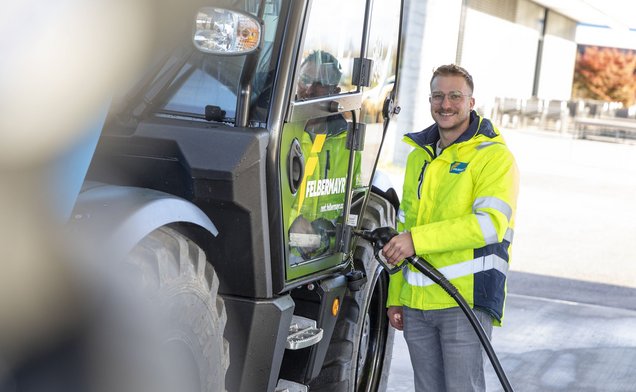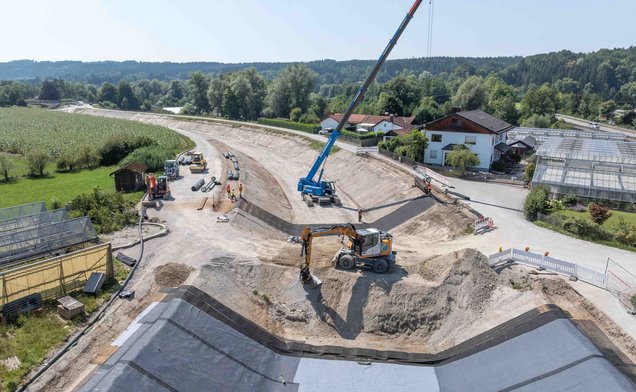Felbermayr tests sustainable fuel
November 18, 2025 | Moritz Glück
Sustainability is a central issue for Felbermayr: “In order to continue to meet customer requirements and legal requirements, we are testing alternative drive solutions at an early stage. For areas of application without available alternatives, HVO is a useful transition technology,” explains ESG and Compliance Manager Katharina Perfahl.
Act sustainably, refuel cleanly — HVO as part of the
Hydrotreated Vegetable Oil solution — HVO for short — is a promising, more sustainable alternative to fossil diesel. The synthetic fuel is obtained from hydrogenated vegetable oils and animal fats, which generally come from residual and waste materials. The highlight: With appropriate quality and production, CO₂ emissions can be reduced by up to 90 percent compared to conventional diesel. According to Felbermayr workshop manager Josef Kreuzmayr, this has no disadvantages: “HVO does not result in any loss of performance,” and the diesel replacement is also comparable to fossil fuel in terms of maintenance intensity.
Felbermayr also carefully reviews the framework surrounding HVO:
“We pay particular attention to the origin of the raw materials used and attach great importance to their traceability. With appropriate certificates, we can ensure that the use of HVO actually contributes to greater sustainability. Pilot projects like this help us set the right course for the future,” continues Katharina Perfahl.
Stickers with a signal effect
In renting, Felbermayr responds to the increasing interest of our customers in sustainable solutions. Around 70 percent of the work platform fleet is powered by batteries or hybrids. In addition, diesel-powered devices that, according to manufacturer information, are suitable for HVO, will be marked with a sticker in the future. “We want to provide our customers with the best possible support in meeting their own sustainability goals and make a decisive contribution to decarbonization with effective and uncomplicated solutions,” explains sales manager for cranes, work platforms and forklift Clemens Felbermayr. The sticker makes it clear that this vehicle can be operated with HVO — a simple measure with a big effect.
Loisach-Isar Canal practical example: Sustainability that works The construction site on the Loisach-Isar Canal shows
how HVO is currently being used successfully. There, Hagn Umwelttechnik — a Felbermayr Group company — is sealing a 1.6 kilometer long section of sewer on behalf of the energy company Uniper. The additional costs of around 20 cents per liter — with a weekly requirement of 3,000 to 5,000 liters — are shared equally by both project partners.
Several powerful machines are used, all of which are refuelled with HVO: a 15-ton mobile excavator, a 25-ton crawler excavator, a 29-ton long-handled excavator and a telescopic crawler crane. An additional construction site tank and HVO stickers on all HVO compatible devices ensure a practical fuel supply on the construction site. The implementation is convincing not only from a technical point of view, but also from an organizational point of view. “With HVO, sustainable action is possible where it is particularly important — on the construction site, in every machine, with every refueling,” is how site manager Martin Höpp sums up the project. For him, it is clear: “Especially in such an important project as flood protection on the Loisach-Isar Canal, the use of HVO shows that environmental protection and construction practice can go hand in hand. It is about implementing practical solutions that have an immediate effect — and that without complex modifications. ”
A look at the figures also shows how effective this approach is. It was possible to achieve a greenhouse gas reduction of around 90 percent compared to conventional diesel. With around 26 tons of CO2 saved, this corresponds to the annual storage capacity of around 1,000 trees.



